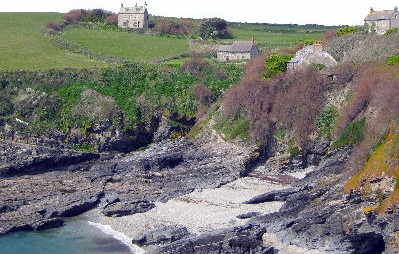
Born 1770 at Breage near Helston, John Carter matured to become one of the biggest rogues on the coast, the self styled King of Prussia.
John Carter, the eldest of the Carter brothers, named the cove Prussia Cove, because of his deep admiration for Frederick the Great, King of Prussia. John Carter himself became known as the King of Prussia, as he engaged in ever more daring encounters with the revenue.
Carter was a mixture of hard working fisherman, honest merchant and out and out rogue. He operated out of Bessies Cove, a rocky inlet near Perranuthnoe in Mount's Bay. It was an area notorious for lawless gangs of wreckers and smugglers. But it was a time when few local people thought smuggling to be a crime. John and his brother Henry were well known along the French coast, but during the French Wars they were arrested and imprisoned in St Malo for a year on one occasion.
The wars that Britain was fighting were costing the country a lot of money. This had to be raised by taxation, particularly on imported goods. Owners of small, fast boats could to evade the high taxes if they could evade customs officials enforcing their collection. High duties had been imposed on luxury items such as wine, spirits and tobacco.